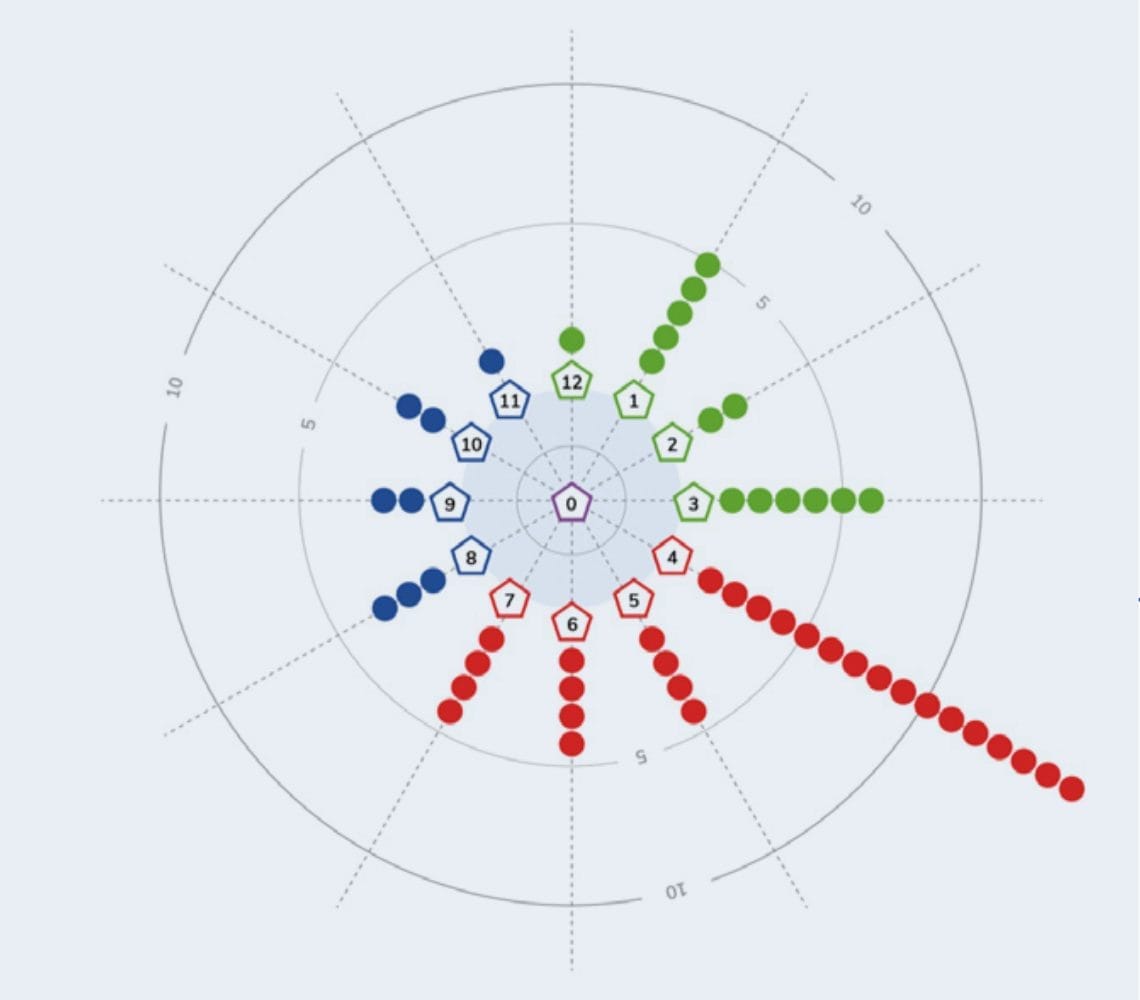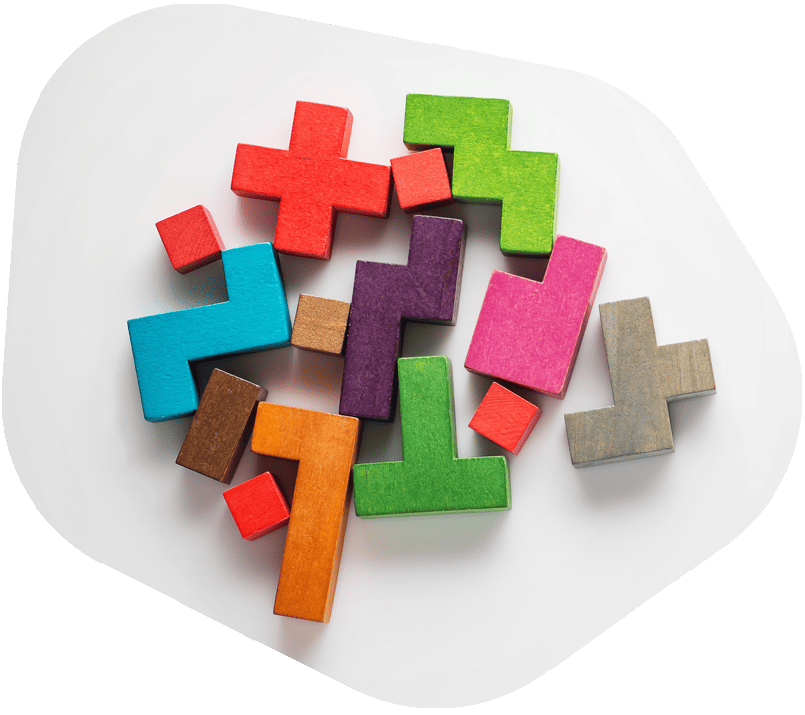WHY DON’T TEAMS WORK?
(And what we can do about that)Why do they suffer from poor productivity, poor performance, and a lack of engagement? Why do mental health issues, absenteeism, and dysfunctions show up?
Why do people feel disconnected, unsatisfied, unfulfilled, and eventually quit?
There are three issues…
FIRST:
People
People are different
In a team you have people, and people are different. But that’s why you’ve employed them: to do different roles. And whether they’re different or not they have to find a way to communicate effectively, and to relate to each other; they have to be able to get on.
Now, we know that won’t always happen. Why would you always want to relate to the person that’s working next to you? Like sitting on a train, why would you want to talk to the person opposite?
But it’s different with teams. Wherever they’re working – in a business, in government, in a school, a hospital, or a police force, people need to get on. They don’t have to like each other, but they do need to work well together. And sometimes that’s hard, because people can be so different, and it can be so hard to understand and accept those differences. This is not insurmountable. I’ll show you why, later.
SECOND:
Communication
Good communication isn’t always easy; there are lots of factors involved in both giving and receiving the message. How often have you heard someone say, “no that’s not what I meant, what I said was…”. Or “I told you that last week, weren’t you listening?”
Unfortunately, communication is not always logical because the words need to pass through the many ‘filters’ of other people’s emotions in order to be heard as they were intended. For example, the introvert designer is likely to give too much detail, and thus annoy the extrovert salesperson who has already mentally switched off because they want to get on. And equally, the extrovert will annoy the introvert as they will talk a lot but not necessarily give the detail that the introvert needs to do her job.
Then there are questions that will arise, not always voiced, such as: How does what I do fit into the whole? Where does it fit? Do you really understand me and what I’m saying? Are you really listening? Why do I feel like you’re speaking a foreign language? Good communication is about the message and how it’s delivered, but it’s also about who’s receiving the message. You won’t be surprised that we have ideas about that, too.
THIRD:
Leadership
Becoming an effective leader of a team is not easy. Having a strong vision and a strategy; having a plan; knowing and respecting the individuals in your team; being able to bring out the best in others; making sure everyone has what they need… the list is long.
So, it’s not surprising that leadership is often poor. Not because we’re inadequate as people but often because we’ve never been taught how to lead; how to do and how to be what’s necessary to get things moving and the team achieving.
For example, how do you look after your team? Are you so busy because you feel you’ve got to be the one that does everything or is able to do everything? Because we know that’s not true; not every leader will be able to do every job in the team; that’s why you’re employing other people. But how do you get the best from those people.
And what difference would it make if you did get the best from everyone in the team, including yourself? How much faster would the bus go, do you think?
So, we have three issues to deal with to answer the question, why don’t teams work?
So, what’s the answer?
CHANGE
IS THE ANSWER
If we want a different result then something has to change. And all change starts with us; or you and me, to be precise. Much as we might prefer others to change to our way of thinking or doing, that’s not going to happen, at least not without some significant input from somewhere.
And the change starts with awareness. (The fact that you’ve read this far will mean that you already have an awareness to change.)
There are 4 things we need to be aware of:
- First, the need for change (you might be saying to yourself, “I know we can be better!”)
- Second, getting clarity on how you’re different from other people.
- Third, understanding how others in the team are different from each other, and from you, and sharing that understanding. And
- Fourth, encouraging all to deal with each other in the way that works best for them as individuals, so that the team is at its best, and they then produce their best work.
The start is to look at yourself and explore how you like to be and what you like to do. We define that as your character and through a unique process we’ve identified 12 possible characters.
Here are some of the more obvious differences in the 12. For example, you might be fascinated by the detail of a project, or sales, or helping people, or money to spend, or an interesting design, or business results. If we know what character you are, we’ll be able to predict how you prefer to communicate, how you like to lead and how you’ll deal with some of the other 11 characters you may have around you.
This is awareness at its best. It’s not the whole answer of course; we’ve still got to do something different to deal with the different situations and people that we come across. And that means helping others in the team understand their own preferences, so that they can join you on the same journey.
PERSONAL
PROFILE
In order to do that we’ve developed a process of profiling – we call it the Perfect Teams Indicator. It’s on-line, it’s quick, taking about 10 minutes; not expensive, costing £42; and produces a fascinating and detailed 32-page report telling you all about:
- which one of the 12 characters you prefer to play and what that means,
- your communication style,
- your leadership style,
- the gifts you bring to the team,
- what people need to do to connect with you quickly and respectfully,
- what people need to be aware of if they wish to avoid annoying you,
- your innate characteristics that make you successful,
- the areas you need to be aware of that could be potential pitfalls and areas to attend to.
Now, you probably already know yourself quite well, but most people gain significant additional insights from doing the Indicator. For some people the real and tangible value is that it clearly shows how different people are, in the way they want to relate and communicate. And many people say, “That’s really interesting. I didn’t realise that about myself”.
“Perfect Teams is ‘Simple, Clear, and Effective”
TEAM
PROFILING
Knowing your own Profile, the next step is to profile the team. This means that you will understand the whole team and their characters.
You can do this quickly and effectively by profiling your whole team. For a team of ten you can do this for less than £500. You will then be able to see a graphic visual map of your whole team. It will allow you to instantly see where your team’s core competences and strengths lay. It will show you where people feel affinity and connection. It will show you where potential flash-points and conflicts may occur. Most importantly it will show you who you are missing or if indeed your team is ‘Fit-For-Purpose’.
Two teams, two different mindsets.
Which one is match fit right now?

SEEKING

“A very powerful model. It generated insights for our team to understand the dynamics of communication and their interaction with colleagues.”
LEADERSHIP
You might not know how to deal with all this information when the rest of your team have done their indicators. Understanding this dynamic in more depth is often when we get called on to come in and help with educating the team leader and the whole team with a combination of workshops, training, and coaching. Sometimes the team leader has enough self-awareness and skill to take on this role themselves. We will usually be called in to help if you do not have the in-house expertise.
For this stage you would need to allow two to three hours, and budget an extra £120 per head. In the workshop your team will be introduced to the Perfect Teams theory and process. We will share the key concepts that make teams work and how you can lead them. The whole team will have a common language allowing them to recognise the individual traits and characteristics of who’s around the table. All the idiosyncrasies and gifts that each team member can bring, both the positives and the negatives, will be transparent and clear. Everyone will learn that the key is effective communication. The bottom line? You will immediately be able to use the tools to improve team performance, engagement, and profit.
SUMMARY
Our workshops and presentations are always highly participative. You will find yourself getting engaged, and you will leave with a common understanding of both yourself, and your own perfect team.
Our workshops are facilitated by accredited and licensed Perfect Teams associates. To date we have been used in 36 different industry sectors, across 298 different companies, in 29 different countries. Our South African licensee recently facilitated a virtual workshop for an international AI company with delegates from Costa Rico, Dominican Republic, Canada, Germany, Uganda, and Kenya. Company sizes have been from small tech start-ups to major FTSE 100 PLCs. Companies thrive by having cohesive, collaborative teams and that is what we help you create.

 Article by:
Article by: